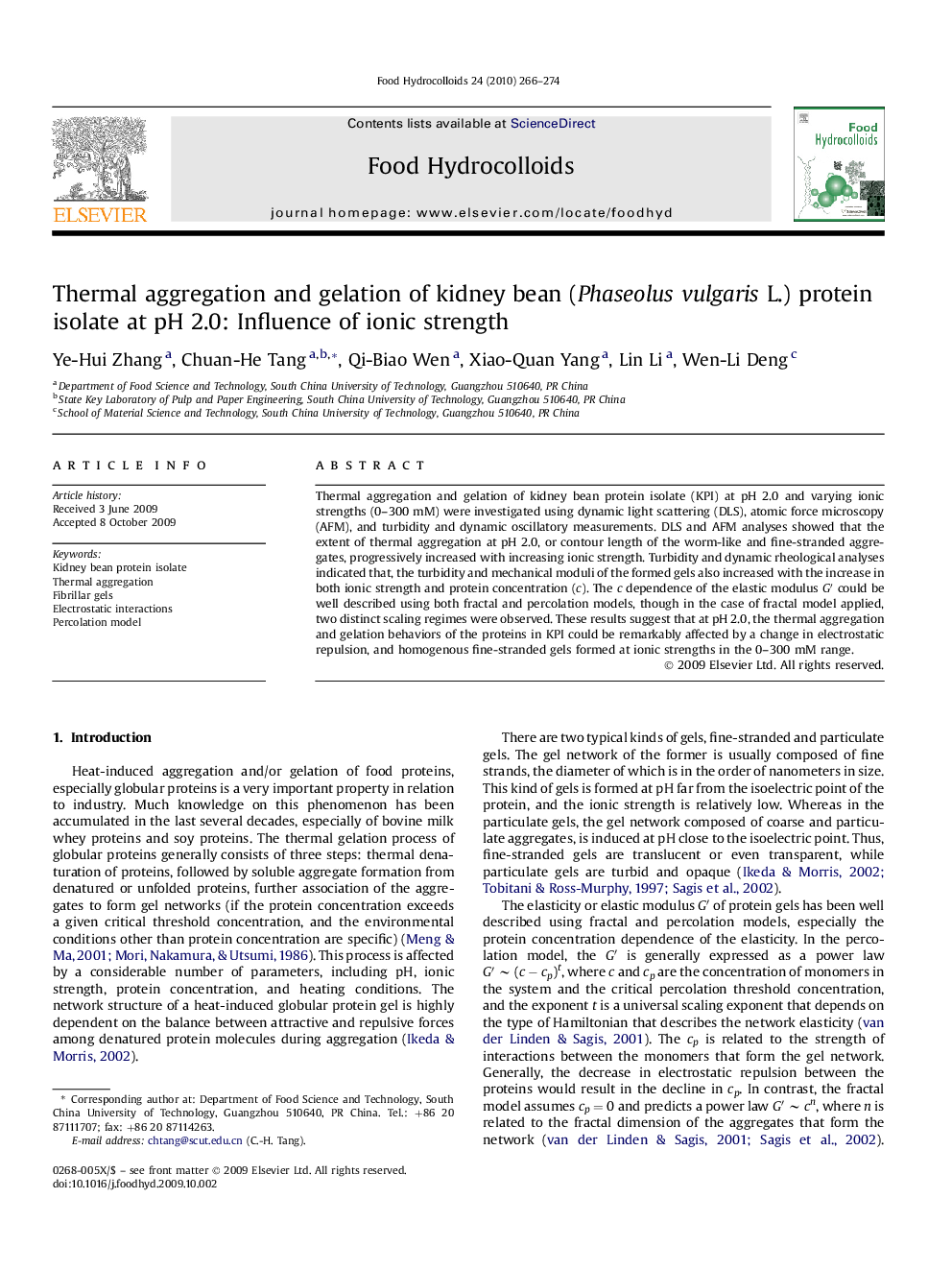| Article ID | Journal | Published Year | Pages | File Type |
|---|---|---|---|---|
| 604593 | Food Hydrocolloids | 2010 | 9 Pages |
Thermal aggregation and gelation of kidney bean protein isolate (KPI) at pH 2.0 and varying ionic strengths (0–300 mM) were investigated using dynamic light scattering (DLS), atomic force microscopy (AFM), and turbidity and dynamic oscillatory measurements. DLS and AFM analyses showed that the extent of thermal aggregation at pH 2.0, or contour length of the worm-like and fine-stranded aggregates, progressively increased with increasing ionic strength. Turbidity and dynamic rheological analyses indicated that, the turbidity and mechanical moduli of the formed gels also increased with the increase in both ionic strength and protein concentration (c). The c dependence of the elastic modulus G′ could be well described using both fractal and percolation models, though in the case of fractal model applied, two distinct scaling regimes were observed. These results suggest that at pH 2.0, the thermal aggregation and gelation behaviors of the proteins in KPI could be remarkably affected by a change in electrostatic repulsion, and homogenous fine-stranded gels formed at ionic strengths in the 0–300 mM range.
Graphical abstractFigure optionsDownload full-size imageDownload as PowerPoint slide
